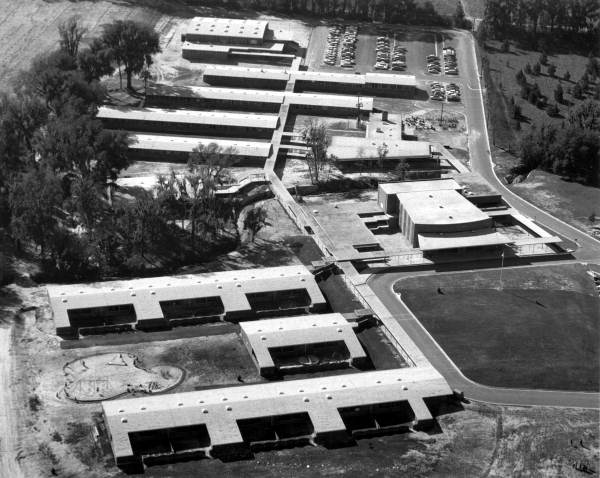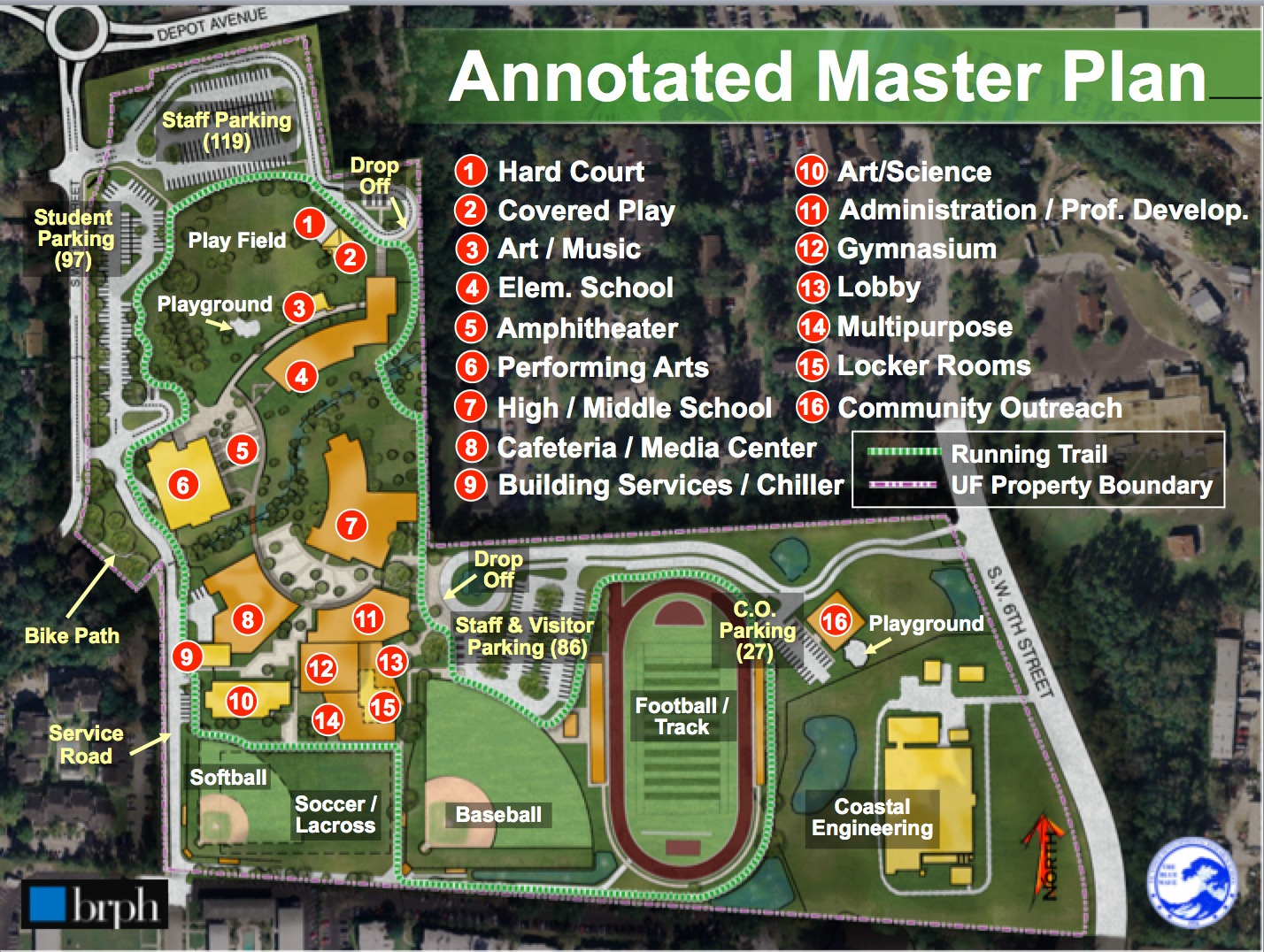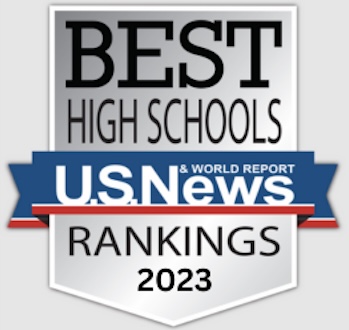1. 2007- 2012 Redesign
Published 2012-13
 For P.K. Yonge, the 2007 Florida Department of Education school building survey resulted in some interesting conclusions: 1) the aging of the majority of campus buildings (constructed in the 1950s) indicated significant work needed to be done, and 2) the condition of the buildings and infrastructure was such that it would be more cost effective to demolish existing buildings and start anew.
For P.K. Yonge, the 2007 Florida Department of Education school building survey resulted in some interesting conclusions: 1) the aging of the majority of campus buildings (constructed in the 1950s) indicated significant work needed to be done, and 2) the condition of the buildings and infrastructure was such that it would be more cost effective to demolish existing buildings and start anew.
Building a new school is a large undertaking even if traditional standards for school design and construction are employed. P.K. Yonge’s Director at the time, Dr. Fran Vandiver, took the DOE survey results as an impetus to redesign the entire P.K. Yonge campus focusing in a way that would meet the requirements and demands of educating our children today, and tomorrow. The prospect of new buildings for elementary, middle, and high – opened the door to reconsidering how space supports learning. Dr. Vandiver describes it as “building a new new school, not a new old school.”
 With full support from the Department of Education, and in collaboration with Construction Planning at the University of Florida, P.K. Yonge solicited bids for the conceptual design of a new new school. From the pool of submissions, Fielding Nair (school architects and change agents for education) was a clear choice. Once formalized, the relationship with Fielding Nair led to a lengthy process of collecting stakeholder input for the conceptual design of a new P.K. Yonge. Innumerable meetings were held to inform the development of the conceptual design and to garner support from stakeholders of all kinds. Students, parents, P.K. Yonge faculty, University of Florida faculty, P.K.Yonge alumni, members of the Gainesville community, and the P.K.Yonge Board of Trustees were all consulted and input was solicited on the 5-phase development project for a whole new campus – new buildings for elementary, middle, and high school as well as a new library, cafeteria, and gymnasium. Given P.K. Yonge’s location in the midst of Gainesville’s downtown innovation plans, the community meeting resulted in 250 interested parties in attendance.
With full support from the Department of Education, and in collaboration with Construction Planning at the University of Florida, P.K. Yonge solicited bids for the conceptual design of a new new school. From the pool of submissions, Fielding Nair (school architects and change agents for education) was a clear choice. Once formalized, the relationship with Fielding Nair led to a lengthy process of collecting stakeholder input for the conceptual design of a new P.K. Yonge. Innumerable meetings were held to inform the development of the conceptual design and to garner support from stakeholders of all kinds. Students, parents, P.K. Yonge faculty, University of Florida faculty, P.K.Yonge alumni, members of the Gainesville community, and the P.K.Yonge Board of Trustees were all consulted and input was solicited on the 5-phase development project for a whole new campus – new buildings for elementary, middle, and high school as well as a new library, cafeteria, and gymnasium. Given P.K. Yonge’s location in the midst of Gainesville’s downtown innovation plans, the community meeting resulted in 250 interested parties in attendance.
In addition to stakeholder input, articles and guided readings, visits to other schools (the Duke School), University of Florida consultants, and “Trailblazer” teachers selected from developing learning communities were all important parts of designing a school for students of today and tomorrow.
Once stakeholder input activities were complete, conceptual design for the 5-phase P.K. Yonge campus revitalization effort began in earnest. Drafts were presented and redrafted until the conceptual design of this new new school was ready for the next phase: design-build. The design- build phase presented one main question: Where do we start?




